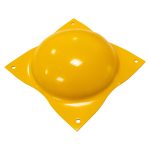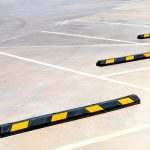In our modern, technology-driven world, the role of cables in transmitting power and data is often taken for granted. These essential components are found in nearly every industry, from manufacturing and construction to retail and office spaces. But with this pervasive presence comes a range of potential hazards and challenges. Loose or exposed cables can lead to accidents, disrupt operations, and even cause severe injuries. Managing these risks, while ensuring the optimal performance of the cables, becomes a crucial task.
Enter cable protectors. These ingenious devices, also known as cable covers or cable ramps, are far more than mere accessories. They are essential tools designed to safeguard and organize electrical cables within industrial environments. Whether it’s heavy machinery rumbling over a factory floor or the constant foot traffic in an office corridor, cables are subject to a variety of stresses and strains that can compromise their integrity. Cable protectors rise to this challenge by providing a robust defense against physical damage, minimizing the risk of accidents, and helping maintain an orderly and efficient workspace.
But what exactly are cable protectors? How do they work? Why are they so essential in contemporary industrial and commercial settings? What types of cable protectors are available, and how do you choose the right one for your specific needs? This comprehensive guide aims to answer these questions and more, delving into the functions, types, benefits, and key considerations of cable protectors.
By understanding the importance of cable protectors, businesses can enhance safety, reduce costs, improve aesthetics, and streamline operations. As we move forward in this article, we will explore the world of cable protectors, revealing how these seemingly simple devices play a pivotal role in maintaining a safe and organized working environment in various settings. Whether it’s a bustling warehouse, a sleek office building, or a busy retail store, cable protectors have found their place as indispensable tools in our interconnected world.
Understanding the Functions of Cable Protectors
1. Protection Against Physical Damage
Cable protector is designed to provide a robust physical barrier that prevents damage to cables caused by heavy machinery, vehicles, foot traffic, or other potential hazards. They shield the cables from direct impact, abrasion, and environmental conditions, extending their lifespan and maintaining their functionality.
2. Minimizing Risk of Accidents
Loose or exposed cables can lead to accidents like tripping or cable exposure. Cable protectors help minimize these risks by enclosing the cables in a secure casing, eliminating the danger of accidental contact or stumbling over them.
3. Organizing and Identifying Cables
By housing multiple cables within a singular structure, cable protectors ensure that cables are neatly arranged and easily identifiable. This organization facilitates maintenance and troubleshooting tasks, making it simpler for technicians to locate specific cables.
4. Aesthetically Pleasing
In addition to their functional role, cable protectors contribute to a cleaner and more professional appearance in the workplace, hiding unsightly cables and contributing to a neat and orderly environment.
Types of Cable Protectors
Industrial-Grade Cable Protectors
These are heavy-duty cable protectors designed to withstand the harsh conditions of industrial environments. They can support substantial weights, ranging from 1,000 lbs to 18,000-lbs per axle, and are made with high-quality industrial molded polyurethane.
Office and Retail Cable Protectors
Specially designed for offices, businesses, retail stores, and buildings, these cable protectors are more aesthetically pleasing and are perfect for indoor use. They often feature channels for concealing a single cable and are great for pedestrian traffic, hand trucks, and carts.
Outdoor Cable Protectors
These are robust and weather-resistant, suitable for outdoor environments like warehouses, construction sites, and more. They provide protection against outdoor elements and are designed for quick setup and ability to connect for extended lengths due to integrated connectors.
Key Considerations in Selecting and Implementing Cable Protectors
- Assessing the Environment: Understanding the specific needs of your environment is crucial. Consider factors such as the weight load, exposure to elements, and traffic conditions.
- Choosing the Right Material: Selecting the appropriate material, such as heavy-duty polyurethane, ensures durability and reliability.
- Compliance with Regulations: Ensure that the chosen cable protectors comply with relevant industry standards and regulations.
- Installation and Maintenance: Proper installation and regular maintenance are essential to maximize the benefits of cable protectors.
Conclusion
Cable protectors are more than just accessories; they are vital tools that play a significant role in ensuring a safe, efficient, and organized industrial environment. From protecting cables from physical damage to minimizing accidents and facilitating maintenance, they provide multifaceted benefits that can translate into long-term savings and enhanced productivity. By understanding the functions, types, and key considerations in selecting and implementing cable protectors, businesses can create a workplace that is not only safe but also aesthetically pleasing and well-organized. In the era of technology-driven industrial practices, the investment in quality cable protectors is a small yet impactful step towards building a resilient and modern workspace.







